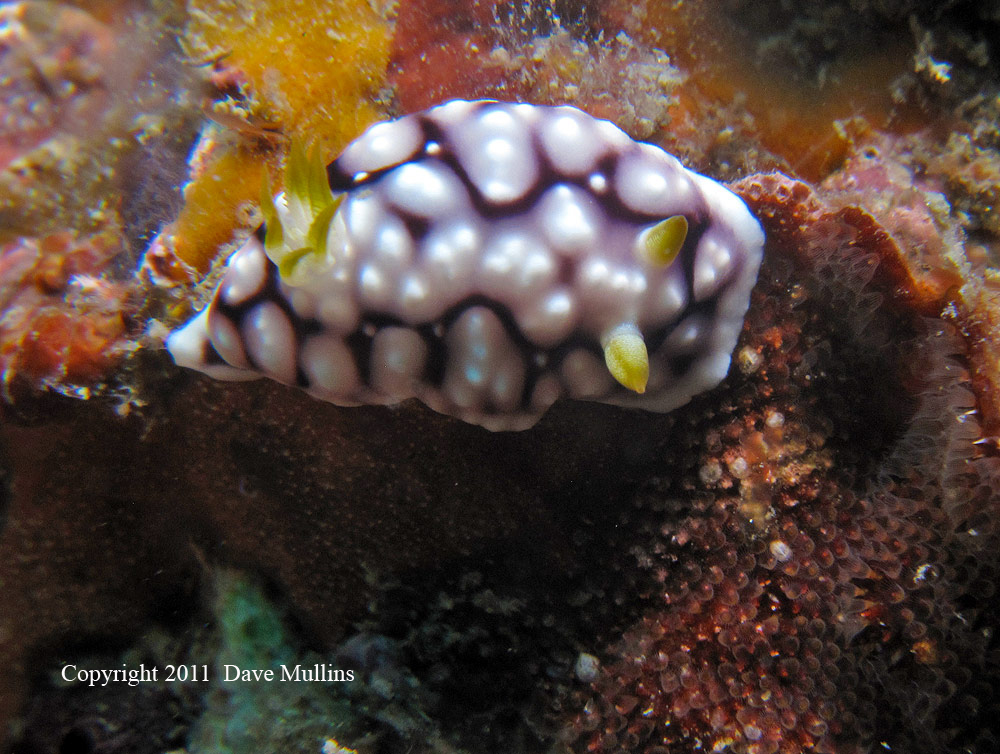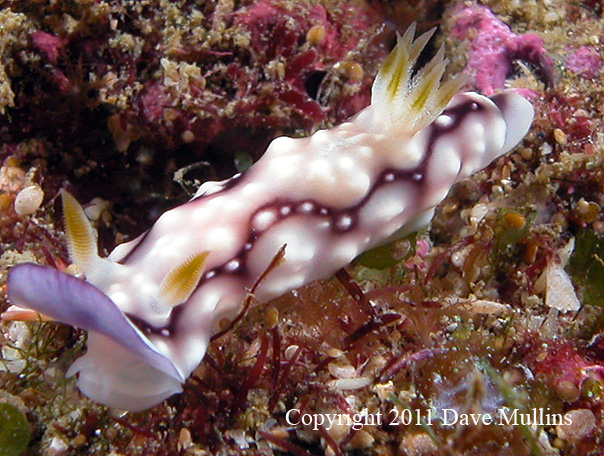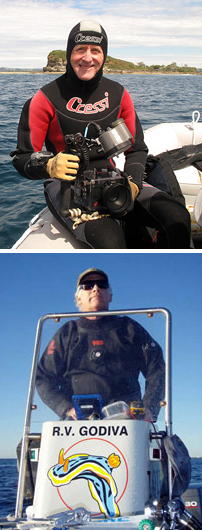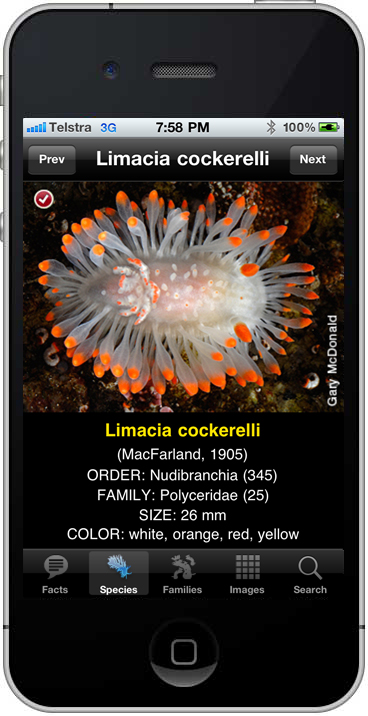 |
Chromodoris geometrica
Image courtesy of Dave MullinsCurrimundi Reef, Caloundra, Queensland, Australia. Canon G10 in Ikelite housing with single Inon Z220 strobe.)
Copyright 2011, Dave Mullins
 |
Chromodoris geometrica Risbec, 1928
Diving in our survey area of the Sunshine Coast, Queensland, Australia (our backyard) we sight over the course of every dive quite a number of very common phyllidiids, the most numerous being Phyllidiella lizae and Phyllidiella pustulosa. On those occasions therefore when we sight Chromodoris geometrica it appears rather incongruous with its broad pustulose mantle sprouting a tuft of green dorsal gills. Described by Risbec in 1928 from New Caledonia, Chromodoris geometrica is found in both the broad Indo-Pacific region and the Indian Ocean, from Japan down to Australia and from the Marshall Islands across to South Africa although it is most commonly reported from the Western Pacific. It presents with an unusual combination of external features. Many divers mistake them for phyllidiids at first and there is no doubt that it is the intention of the texture, pattern and colouration of the mantle to mimic the appearance of their toxic cousins in order to confuse predators. The pattern on the mantle can vary from a dark background covered with low individual white tubercles to groupings of multiple tubercles which are so numerous it has the effect of reducing the background colour to a mere reticulation. A very distinctive feature is the colour of the gills and the tall rhinophores that although white at their bases the apices however can range from a vivid to a straw-coloured green. Whereas there are a number of chromodorids that raise and lower their entire mantle as they crawl this species belongs to a small group that only raise and lower their enlarged anterior portion of the mantle when on the move. In the case of Chromodoris geometrica the underside of this flexing anterior portion is coloured violet. The foot also has a dark violet line down each side at its junction with the body. The Darwinellidae sponge Chelonaplysilla violacea has been identified as its preferred food. Be aware that there are two other related and very similar looking species, Chromodoris conchyliata and Chromodoris hintuanensis (both links courtesy of Bill Rudman's Sea Slug Forum), whose appearance is not without some confusion. Suffice to say that these two species may be differentiated from Chromodoris geometrica by the reddish colour of their gills and rhinophores. Not all authorities however are convinced of the separation. A full discussion thereof would be best tackled in a separate post. |
References:
Cobb & Willan 2006. Undersea Jewels, ABRS, Canberra
Rudman & Bergquist 2007. A review of feeding specificity in the sponge-feeding Chromodorididae, Molluscan Research 27(2): 60-88
Mullins D. (Message in) & Rudman W. (Comment) 2008. Chromodoris geometrica
Message #22003, Sea Slug Forum, Australian Museum, Sydney.
Queensland, Australia
Oct., 2011
Send Dave email at marineimages@hotmail.com
WEBMASTER'S NOTES:
The Webmaster was able to record the mantle "flapping" behavior of both Chromodoris geometrica and Chromodoris hintuanensis during a recent trip to Bali, Indonesia.

|
|
Gary Cobb and Dave Mullins
on location in Queensland, Australia
 |
NUDIBRANCH ID iPHONE APP
NUDIBRANCH ID iPHONE APP SERIES
For more information see the Nudibranch ID App
Website
or send Gary email at or send Gary email at gary@nudibranch.com.au
|
 |
